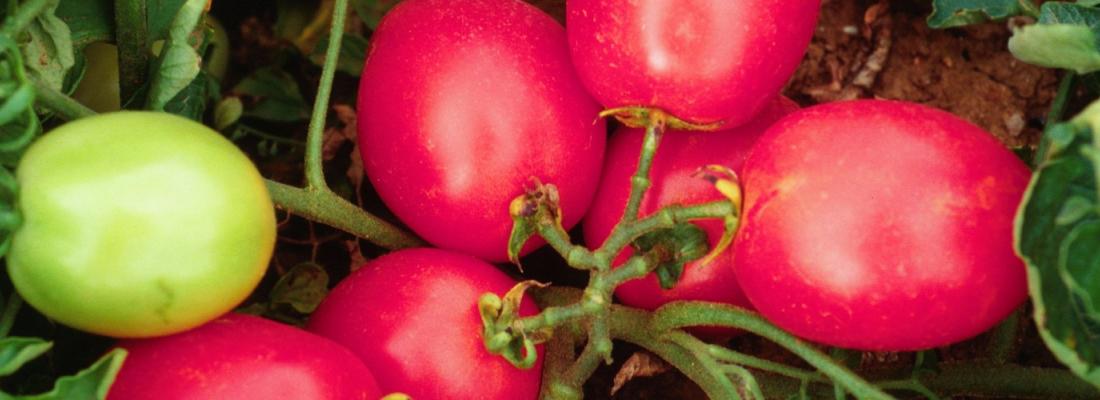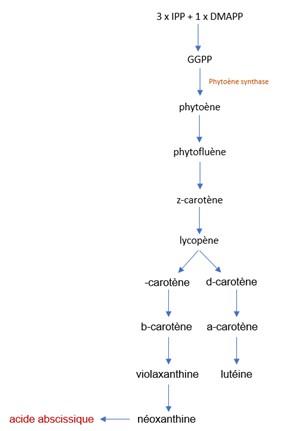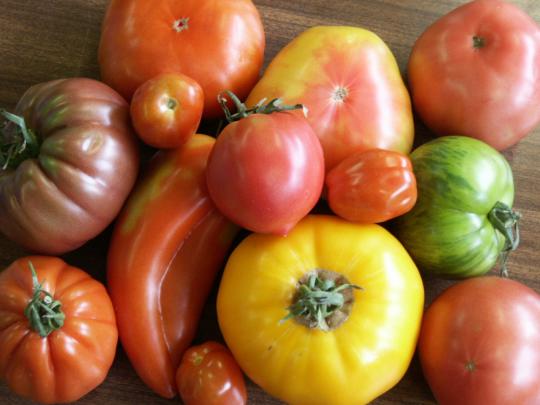Food, Global Health Reading time 4 min
Optimising tomatoes' health benefits
Published on 11 July 2022

850,000 tonnes of tomatoes eaten in France each year, 600,000 produced
The most widely eaten vegetable in France, tomatoes have many hidden health virtues. Low in calories, rich in fibre, they also contain carotenoids, mainly lycopene, whose anti-oxidant and anti-inflammatory effects have been known for the last two decades. They also provide vitamins and minerals. But such health benefits depend on a large range of factors. First, they are linked to the concentration of such beneficial components, which, in turn, depend, among other things, on the tomato's variety and growing conditions. Then, the effects of those components depend on how well they are assimilated by the body, that is to say their bioaccessibility and bioavailability 1. Those properties are also influenced by the techniques used to process tomatoes.
It is all those factors that are being analysed at INRAE in a production/quality/health study continuum, that has given rise to some wide-scale multidisciplinary programmes 2.
The tomato's contributions to health
- About 90-95% water depending on the variety
- 2 g of fibre per 100 g
- 2.4 g of carbohydrates per 100 g
- Rich in carotenoids, 80% of which are lycopene: 50 - 100 mg per kg of fresh tomatoes, depending on the variety
- Source of vitamins D, C, E, vitamin A precursors
- Rich in minerals (potassium, magnesium)
Lycopene has anti-oxidant and anti-inflammatory properties

Just by itself, lycopene possesses proven beneficial effects against oxidative stress by fixing reactive forms of oxygen. Linked to those anti-oxidant properties, as they share, in part, the same molecular pathways, lycopene has anti-inflammatory effects, which in humans are correlated to a decreased risk of cardiovascular complications, metabolic syndrome 3 and certain cancers. The work of Jean-François Landrier's team has contributed to efforts to characterise tomatoes by revealing lycopene's effects in situations of obesity. Obesity is accompanied by the production of inflammatory substances in adipose tissue, the liver and muscles. Those substances act on cellular insulin receptors, leading to insulin resistance and increased glycemia 4, risk factors for diabetes. In obese mice that are given feed that includes a tomato powder supplement, this cascade of events is abated by lycopene's anti-inflammatory effects. The same INRAE team has also demonstrated such effects in vitro, on adipocyte cultures.
“These encouraging results in mice have led to a clinical study in humans that is supposed to begin in 2024 at the La Conception Hospital’s clinical investigation centre in Marseille. It will involve observing the effects of tomato powder included in the food of prediabetic people, with a view to prevention,” announced Jean-François Landrier.
A variety of factors modulate tomatoes' health benefits
Tomato powder and puree: products of interest
18 kg of processed tomatoes eaten per capita each year in France along with 15 kg of fresh tomatoes per capita each year.
The tomato powder used in studies on mice or humans is a very interesting form for consumption. It is practical to use and could be available year-round. It is already widely used in industry, in soups and many different prepared dishes. “We know that lycopene is more bioavailable in tomato puree than it is in fresh tomatoes. It's a relatively stable substance. As part of our TomHealth 2 project, several teams 5 are working on optimising the tomato powder manufacturing process, in particularly the drying stage, so as to preserve its nutritional qualities,” added Jean-François Landrier. A similar project, TomAbility 2, is focussing on the properties of tomato puree.

Another factor that has to be considered: the tomato's growing conditions, particularly the impact of water deficits, which are becoming an increasingly significant problem against the backdrop of global warming.
“Tomatoes are an irrigated crop, whether in open fields for industrial use or in greenhouses/tunnels for table tomatoes. It is important to understand the influence that water stress has on tomatoes' health benefits, so as to adjust irrigation practices,” explained Nadia Bertin.
Some studies have shown that such stress may promote carotenoid production. That does, in fact, seem logical when you know that one of the physiological roles of carotenoids (see inset) is to protect plant cells from oxidative stress, which may sometimes accompany water stress 6.
However, the situation is more complex. According to Nadia Bertin, a range of work, including some by her team, has shown that the effects of a water deficit depend on its intensity, the stage of plant growth when it occurs, and, finally, the genotype of the tomato tested. Also, it should be recalled that when there is a water deficit, tomatoes have a lower water content, which does lead to more concentrated carotenoids, without any increase in their synthesis.
Water stress: complex effects
“In any event, our work has allowed us to identify the more carotenoid-rich tomato genotypes, such as, for example, the H1311 cultivar developed by Heinz. However, this genotype is less productive under stress. As is often the case, you have to find a compromise between yields, quality and resistance to stress. That is why all those components have to be fully integrated," concluded Nadia Bertin.
- Bioaccessibility: presence of the compound in the organism (digestive tract). Bioavailability: presence of the compound in the blood, available to cells.
- ANR TomHealth project (2021-2024), coordinated by INRAE, based on tomato powders (https://c2vn.univ-amu.fr/projet-anr-tomhealth/?lang=en ), TomAbility project (2019-2022), coordinated by the CTCPA agrifood technical centre, based on tomato puree (https://www6.paca.inrae.fr/sqpov/Projets-Partenariats/Projets/Projets-nationaux-institutionnels/Tomability-2019-2022 ).
- Metabolic syndrome corresponds to a group of problems linked to excess fat inside the stomach.
- Cellular resistance to insulin brings about a failure in glucose uptake by such cells, which results in an increase in blood glucose concentrations (glycaemia).
- Teams at Oniris' GEPEA laboratory in Nantes, CTCPA, INRAE's joint research unit "Safety and Quality of Processed Fruit and Vegetables" and the firm Capsulae.
- In the event of water stress, the plant defends itself by limiting water loss, by closing its stomata and the pores on the surface of its leaves. This brings about a reduction or halt in photosynthesis, because the carbon dioxide needed can no longer penetrate leaf cells via the stomata. The halt in photosynthesis brings about oxidative stress that carotenoids help mitigate.
Versatility of carotenoids in tomatoes

Carotenoids take part in a wide range of physiological mechanisms within plants, including growth, development and responses to environmental factors. As photosynthetic pigments, they contribute to the photosynthesis process. The colours they give flowers and fruit (red for lycopene, orange for beta-carotene) also help attract pollinators and predators.
